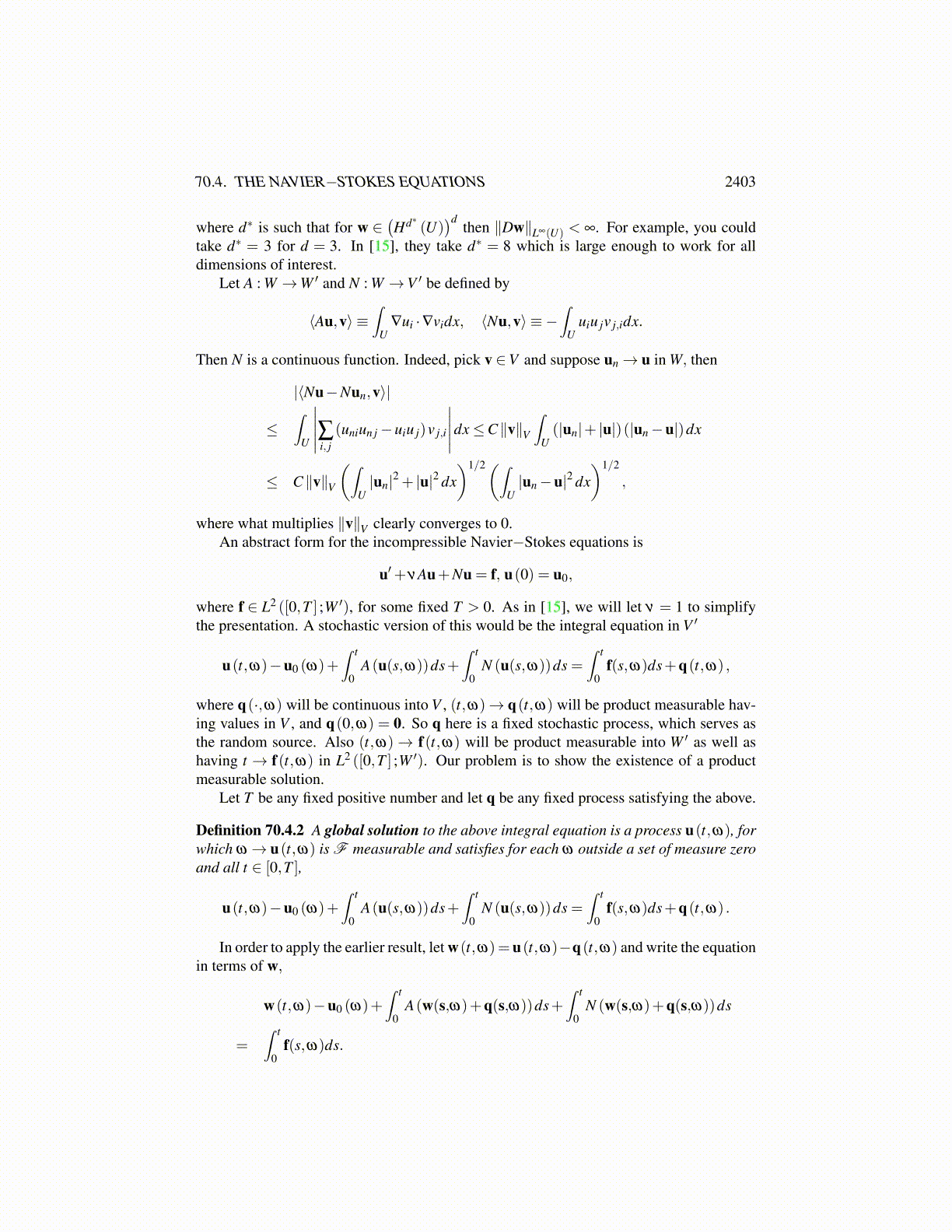
70.3. MEASURABILITY IN FINITE DIMENSIONAL PROBLEMS 2403
By Gronwall’s inequality,
|uτmm (t,ω)|2 ≤ C
(u0(ω),w0 (ω) ,µ,∥C (·,ω)∥L1([0,T ];Rd) ,T,∥f(·,ω)∥L2([0,T ];Rd)
)≡ C (ω) .
Thus, for a.e. ω,τm = T for all m large enough, say for m≥M (ω) where
C (ω)≤ 2M(ω).
Then define the functionsyn (t,ω)≡ uτn
n (t,ω) .
These are product measurable and
yn (t,ω)−u0 (ω)+∫ t
0X[0,τn]N
(s,yn(s,ω),yn (s−h,ω) ,w0 (ω)+
∫ s
0yn (r,ω)dr,ω
)ds
=∫ t
0X[0,τn]f(s,ω)ds.
So each is continuous in t. For large enough n,τn = T and hence
yn (t,ω)−u0 (ω)+∫ t
0N(
s,yn(s,ω),yn (s−h,ω) ,w0 (ω)+∫ s
0yn (r,ω)dr,ω
)ds
=∫ t
0f(s,ω)ds.
Also these satisfy the inequality
supt∈[0,T ]
|yn (t,ω)|2 ≤C (ω)≤ 2M(ω) < 9M(ω), (70.3.4)
the constant on the right not depending on n. Thus for fixed ω, we can regard N as boundedand the same reasoning used in the above lemma involving the Ascoli−Arzelà theoremimplies that every subsequence has a further subsequence which converges to a solutionto the integral equation for that ω . Thus it is continuous into Rd . It follows from themeasurable selection theorem above that there exists u product measurable and continuousin t such that u(·,ω) = limn(ω)→∞ yn(ω) (·,ω) in L2
([0,T ] ;Rd
). By the reasoning of the
above lemma, there is a further subsequence, denoted the same way, for which limn→∞ yn(ω)
in C([0,T ] ;Rd
)solves the integral equation for a fixed ω . Thus u is a product measurable
solution to the integral equation as claimed.We made use of an estimate in order to get the conclusion of this theorem. However,
all that is really needed is the following.
Corollary 70.3.4 Suppose N(t,u,v,w,ω) ∈ Rd for u,v,w ∈ Rd , t ∈ [0,T ] and
(t,u,v,w,ω)→ N(t,u,v,w,ω)